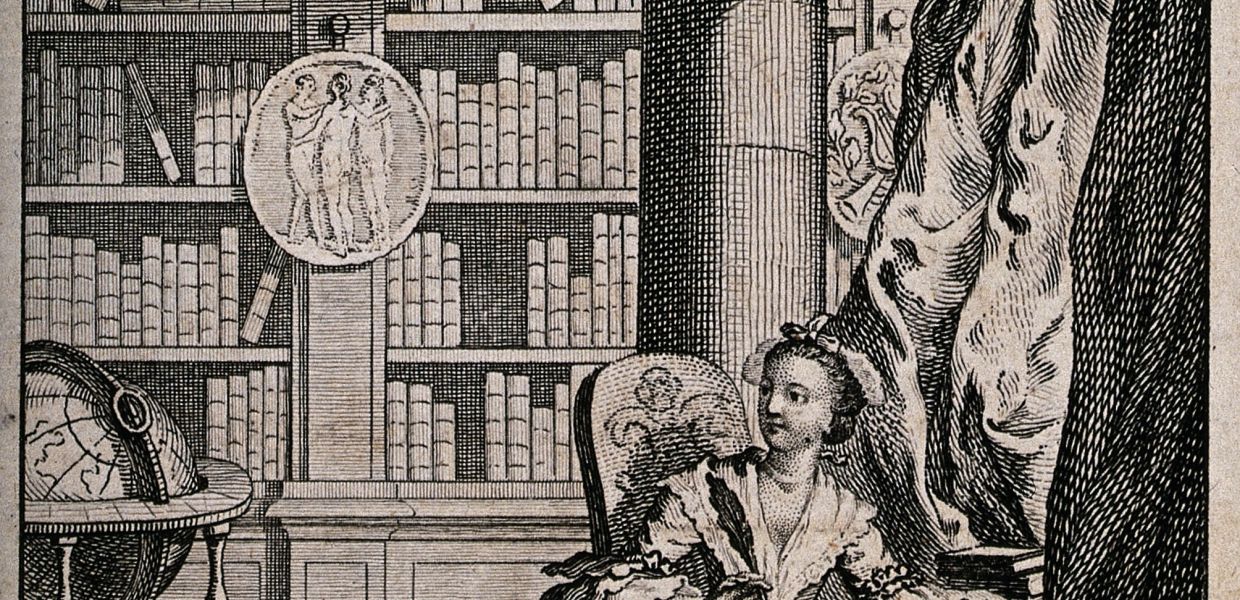Europeana Research Grants: The Long List
Back in September, when the Europeana Research Grants Call was announced, we would never have imagined that in the course of the next few weeks we would be receiving a such vast number of enquiries and, later on, so many interesting proposals.

The 160 research proposals received thoroughly exploited the Europeana ecosystem - collections, API, metadata, channels - and reviewing them took longer than expected. We were particularly thrilled to receive proposals from around the world, from researchers of all fields of the Humanities, Social Sciences and Information Technology
It is with great pleasure therefore that we announce the long list of proposals we have selected. The final decision for the four projects which will receive an award will be made by the Europeana Research Advisory Board by the end of this week. Stay tuned!
|
Aleksandra Nikolić |
Central Institute for Conservation in Belgrade, Serbia and History and Philosophy of Sciences and Technology program, University of Belgrade |
Modeling blended learning approach for school children based on digitized museum artifacts |
| Alice Eldridge |
Digital Technologies/ Digital Performance, Sussex Humanities Lab, School of Media, Film and Music, University of Sussex |
Seeing Sound Archives: Developing an Interactive Visualisation Tool for the Europeana Sounds Archives |
|
Anaïs Guillem |
ICS-FORTH |
Exploring means of Using Europeana Collections for Architectural Research |
|
Apostolos Karalis |
University of Piraeus, Piraeus |
Highlighting Timely Information in Europeana |
|
Bogdan Trifunovic |
University of Warsaw and Public Library Čačak, Serbia |
Enhancing Europeana Capabilities for Web Content |
|
Caroline Ardrey |
University of Birmingham |
Visualising voice: Analysing spoken performances of nineteenth-century French poetry |
|
Catherine Bourne |
University College Cork |
The Beautiful and the Damned: Rethinking representations of the Grotesque Body in the Europeana collections |
|
Chris Lytridis |
Eastern Macedonia and Thrace Institute of Technology |
Use of augmented reality in museum guides |
|
Coleen Morgan |
University of York |
European Archaeology on Film |
|
Florian Windhager |
Donau-Universität Krems - Universität für Weiterbildung, Fakultät für Wirtschaft und Globalisierung |
Modelling Europeana Collection Metadata as 3D Sculptures |
|
Frank Hopfgartner |
University of Glasgow |
Europeana Living Laboratory |
|
Giles Bergel |
Bodleian Library, Oxford |
Image-recognition for Europeana |
|
Giovanna Di Giacomo |
Università degli Studi di Siena |
Craftsmen and places of industry of the precious in Rome, an epigraphic database (200B.C.-600A.D.) |
|
Henriette Roued-Cunliffe |
University of Copenhagen |
The Europeana API as a solution to Wikipedia’s gender imbalance |
|
James O'Sullivan |
University of Sheffield |
Cultural Representation in Europeana |
|
Javier Pereda |
University of Southampton |
Engage with Europeana’s collections through the use of a downloadable Tangible User Interface (TUI) |
|
Lorna Richardson |
Umeå University |
Archaeology and Europeana |
|
Michele Mauri |
Politecnico di Milano |
Development of web platform aimed at the collaborative tagging of Europeana objects |
|
Michele Reilly |
Central Washington University |
This study proposes to identify who are the users, and for what purposes Europeana images are used. |
|
Nanna Thylstrup |
University of Copenhagen |
Mapping Colonial Copenhagen |
|
Natalia Grincheva |
University of Melbourne |
From Portal to Platform: Exploring Public Engagement with European Cultural Heritage Online |
|
Rebecca Stancliffe |
Coventry University |
Explore dance content in Europeana Collections and analyse metadata for non-restricted content |
|
Sabrina Sauer |
VU University Amsterdam |
GIFs FTW: a crowdsourcing campaign to engage millennials with the Europeana Collections |
|
Silvija Aurylaite |
Public Domain City |
Europeana: Open Culture and Design |
|
Spyros Kazanas |
Ionian University, Corfu |
Measuring popularity of Europeana's Cultural Heritage Objects |
|
Stefania Pollone |
Università degli Studi di Napoli Federico II |
Documents for interpretation, Tools for conservation: Paestum in the European Photography between the second half of the Nineteenth century and the mid-Twentieth century |
|
Timothy Duguid |
University of Glasgow |
Interdisciplinary Metadata Frameworks: The MuSO Project |
|
Vasiliki Nikolakopoulou |
Cyprus University of Technology |
Places and Spaces through Europeana eyes |
|
Vladimir Nedovic |
University of Amsterdam |
Learning Correspondences between Visual Content and Human Descriptions of Paintings |
